
Yash Papers’ brand – CHUK, is soon going to enter the market with its compostable tableware range made of bagasse. With commercial production slated to commence anytime soon, CHUK is to become the largest facility of its kind in India, committed to reduce white pollution through its novel and eco-sustainable tableware range. Paper Mart was invited for a guided tour on the new project, wherein it was amply witnessed that Yash is leaving no stone unturned in order to make this eco-sustainable product a mass product.
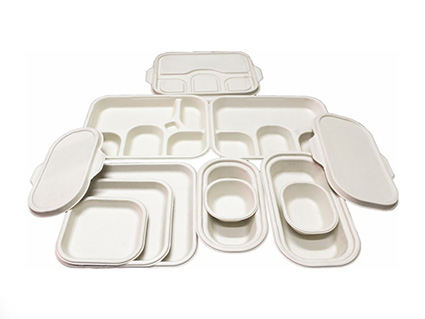
Amid ever increasing environmental concerns, every conscientious manufacturing business has this compelling urge to produce in line with the environmental demands and, in turn, create a sustainable business platform in sync with future. Such environment-friendly products are being talked about in almost all manufacturing spheres except those which are innately oriented towards being non-eco-friendly, viz. fossil fuel based generations, polyolefin/plastic based production, etc. The paper industry, fortunately, endowed with many eco-friendly virtues, and by virtue of its biodegradable input and output, is among best suited industries to undertake such environmentally sustainable form of production. Keeping the same concern in mind, Yash Papers, which started off in 1981, planned the ‘Project CHUK’ which is going to unleash its compostable tableware range July this year.
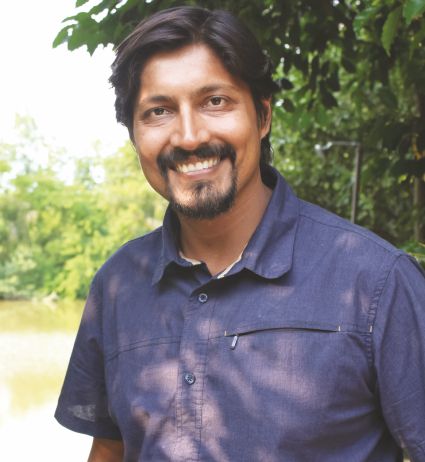
The plastic plates, cutlery and other tableware made from plastic might be convenient, but the harmful effects plastic has on us, and more importantly on the environment, is well-known. CHUK is a major step taken by the company by adopting eco-sustainability as a rational business approach. “Environment conservation approaches form the core of our business philosophy and shape our most of entrepreneurial decision, and CHUK is no exception. Moreover, my personal philosophical take is that when you find a right thing to do, the universe supports you, and my experience so far has validated this notion,” says Mr. Ved Krishna, Head of Strategy, Yash Papers.
How CHUK Happened!
Mr. Krishna firmly believes in the philosophy of predeterminism and that all events are determined well in advance including human actions. “Nothing happens by coincidence,” he avers. “I initially had other plans about things to be done in my life. However, as the destiny would have it, I came back to the paper industry, which I would not call a mere coincidence. There was invisible secret overruling cancelling my all thoughts to work on something else but paper, and here I am!”
Mr. Krishna’s conscious working on some utterly unsustainable practices in packaging paper production in his company amply vindicates the fact that his knowledge, experience, and predisposition were well suited for the paper industry, as though preplanned. The non-biodegradable polyethylene covering of packaging paper was a serious environmental concern, which Mr. Krishna tried addressing through making such paper free from plastic wrappings. “Two areas particularly caught our attention, viz. polyethylene based flexible packaging and Styrofoam based cutlery/tableware, which we thought of substituting with viable products, both economically and practically. One thing leads to other, and we found CHUK product range, and also found out that the pulp at our factory is well-suited fiber to make this product range. We instantly started working in this direction,” informs Mr. Krishna.
CHUK is an outcome of collective idea and a series of events, one leading to another, the availability of suitable pulp at Yash Papers is just one. Most significantly, Yash Papers was already supplying pulp to a host of companies, involved in making such eco-friendly product line. Suggestions from buyers and suppliers were also a factor. These things together with Mr. Krishna’s visions to establish an eco-sustainable business platform precipitated in a decision to go ahead with CHUK. “We wanted to do it in big way,” quips Mr. Krishna. “Small experiment with such product line would not go very far in cleaning earth from hazardous, non-decomposable waste. We therefore decided to set-up the largest facility for this product in the country, with slowly growing towards becoming the biggest in the world.”
A Phenomenal Product Range Made of Bagasse
CHUK, an uncomplicated tableware range, is made from bagasse. Yash is known to produce quality agro-based pulp, packaging, and stationary grade paper. CHUK, a new entrant uses the same pulp in its manufacturing. The common or binding factor between the two different product ranges (packaging paper and tableware) of Yash Papers is the fiber made from bagasse, or sometimes wheat straw (to a minor extent). Being a natural plant fiber, bagasse pulp delivers compostable products. The crockery made of bagasse are water-resistant, shatterproof, freezable, microwave-safe and decomposes on their own within 90 days, which makes them a perfect alternative to plastic or Styrofoam. Also, it is carcinogen-free or a non-carcinogenic product line.
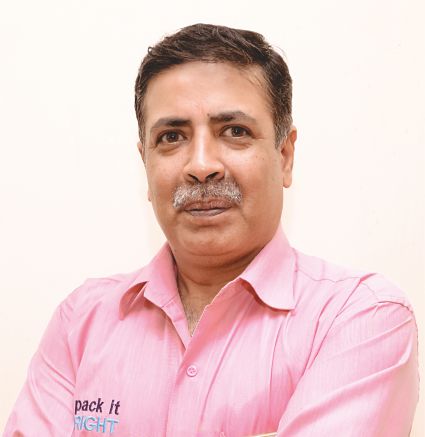
“At Yash Papers, eco-friendliness is the core of every product strategy. The project CHUK had been under taken in line with that vision. With CHUK tableware products being launched shortly, it shall introduce a unique value proposition to our customers,” says Mr. Jagdeep Hira, Head of Business, Yash Papers.
CHUK has come up with a phenomenal, eco-friendly product line with 12 products now to be extended soon. The current portfolio includes 7” snack plate, 9” mini meal plate, 11” dinner plate, 5 compartments tray, 4 compartments tray, tray lid, 180 ml dessert bowl, 250 ml soup bowl, 500 ml take away box with lid and 750 ml take away box with lid.
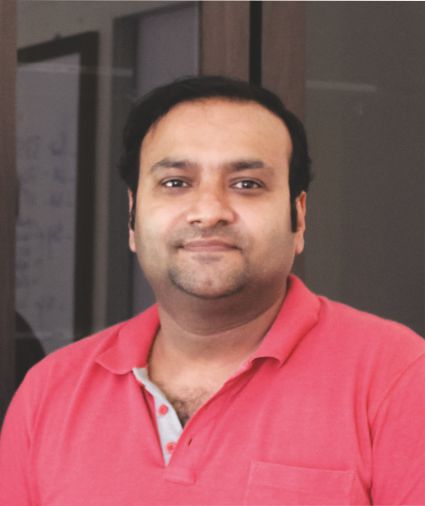
The glass, an essential component of tableware, is conspicuous by its absence from the launched product range, the reason being that the product is made from 99.9 percent of water and remaining 0.1 percent is fiber, rendering it difficult to give a vertical orientation. “When you actually try and orient it, it doesn’t go vertical. That’s why you must notice we have angles everywhere. The fiber needs to stay in place, otherwise, when you put the water to mold and apply vacuum to it, it will pull everything down. But, we are working on 2 cups – 150 ml and 250 ml. Water and coffee are needed anytime, any day; that’s a very big market. There is also a bigger bowl we are working on, i.e. 350 ml; we want to use this bowl as a soup bowl and also we might use the same two 350 ml bowls inversely, lock them and they become a burger box. That’s how we try and innovate with our designs,” explains Mr. Sumant Pai, Head of Marketing, CHUK.
Project CHUK: A New Facility Altogether
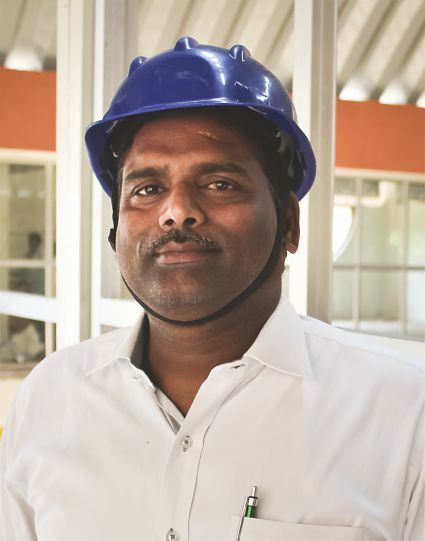
CHUK product range is under trial in Yash’s sampling unit and the full scale production is slated to commence from July, 2017. Mr. Manoj Maurya, who is the Commercial Head at Yash Papers, says that our trial procedure is rigorous and absolutely necessary to resolve all probable quality issues before commercial production starts.
CHUK is an entirely new and kind of turnkey project for Yash with an investment of over Rs. 55 Cr. The building construction and machinery erection work are complete, and the project is ready to commence production in real time having trial runs almost over. The estimated turnover from the new facility is about Rs. 65 Cr annually.
For the project, nine machines have been procured from GeoTegrity China, and the company plan to install nine more machines by the year 2018. The expected production is 12 tonne per day and the designed capacity is about 800,000-900,000 pieces per day. Initial capacity utilization is to be 65-75 percent with a target of 85-90 percent within next two-quarters.

Talking about the new expansion, Mr. Jasvinder Rana, Head of Projects, Yash Papers, says, “Before finalizing the machines order, we explored many machines from Taiwan and China. Finally, we bought the machines from GeoTegrity, China. The benefit of buying from this company is that they have machine manufacturing as well as the production. Same machines are running in their plant also, which made us see the machines at the operational level in terms of the quality of the product and the runnability.”
“We have our own bagasse based pulp generation and captive power generation. We believe in efficient usage of both pulp and power without any waste. Other manufacturers of tableware use electricity to heat the mold whereas we use thermo-fluid oil for this purpose. The oil is heated and passed through the machines and after losing the heat, it is coming back to the furnace and fed again into machine after getting heated. We are not using any power for heating and our power consumption is very less,” informs Mr. Hira.
CHUK Making Process
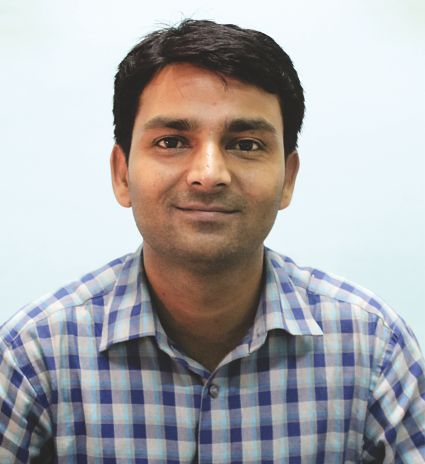
After making pulp from bagasse, the next step involves stock preparation for CHUK product range. In stock preparing process, pulp is treated chemo-mechanically and made ready for forming into the sheet of desired characteristics on the machine. Mr. Suresh Tripathy, Head of Production, CHUK, explaining the process, says, “In the mechanical treatment, we first open the first layer of fiber. One of the things that happen during refining of fibers is fibrillation, the partial delamination of the cell wall, resulting in a microscopically hairy appearance of the wet fiber surfaces. The ‘hairs’ are also called fibrillation. Fibrillation tends to increase the relative bonded area between fibers after the paper has been dried. The refinement builds the toughness of our product.”
“Now, we go to the next step after stock preparation, which includes tableware making machines, which receives the mechanically treated pulp/fiber,” adds Mr. Tripathy.
The tableware machines work on two fundamentals – product formation and drying. The formation of sheets happens through vacuum, wherein the pulp is sucked and formed, keeping the weight into consideration. Thereafter, whichever product one wants to make can be formed by molding, but product is still wet at this juncture. It has 28-30 percent of dryness; rest is water. After formation, the product is dried through transferring it to the hot pressing mold. The temperature of the hot pressing mold ranges from 200-220 degree Centigrade.
“We keep the product in the machine for 55 seconds, pressed from the top mold and bottom mold. Thus, two operations take place simultaneously – the product gets dried and forms a shape,” explains Mr. Tripathy. “To get the product into shape, 150-160 kg/ cm2 of hydraulic pressure is applied. Finally, after the product is dried and shaped, it comes to the collecting table, from where our packaging and finishing team checks each and every product.”
“CHUK is soon going to make around 800,000 pieces of tableware and we ensure not even a single product out of the lot to be missed from our thorough examination. The finishing team scrutinizes each and every piece. After the completion, if the product is according to the company’s manufacturing standards, then only it receives thumbs up,” adds Mr. Tripathy.
Product Marketing: Trends, Feedbacks, and Challenges

Citizens are becoming wise in their product preferences seeking greener, cost-effective products with high quality. The country however still needs a lot of awareness in order to preserve the environment by way of choosing right products. “Responses have been phenomenal and the product range has been very well appreciated across the globe. USP for the product shall be its colour, which shall be brown (Unbleached). We are in the process of building up strong distribution network across globe and have proper channel partners in place,” says Mr. Hira.
Mr. Pai says, “The unfortunate part in India is that the talkers are not the doers; people often talk about environment conservation, but they lack proper action in executing those fundamentals. Our movement should be oriented towards the newer generation. We need to target children; we need an awareness to be created at that level.”
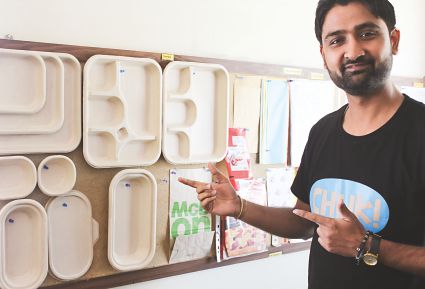
CHUK’s vigorous marketing efforts all around the globe are noticeable. The marketing team is determined in transforming CHUK into a full-fledged brand. The team recently went to AAHAR, the international food and hospitality fair in Delhi, where they talked about the product (CHUK!) and received amazing responses from the audience. “I was looking for such a response and could discernibly see a WOW factor in the eyes of the people. Even though this product has been in the market, the awareness towards that is almost negligible. Our marketing strategy revolves around the objective of making this product reach every nook and corner of the country,” asserts Mr. Pai.
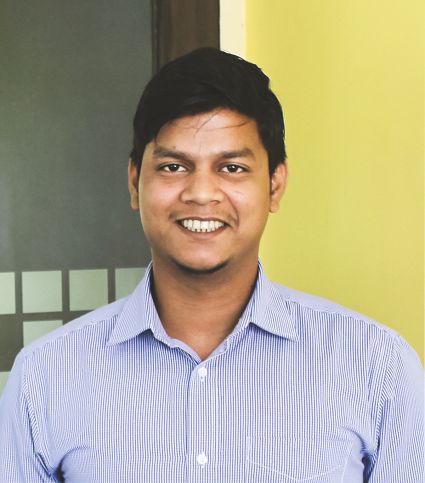
Mr. Avasesh Tiwari, Head of Sales, CHUK, illustrates the marketing trends in the western part of India. He mainly covers Maharashtra and Gujarat and thinks the market in both areas is mature and educated and don’t need much awareness. But, when it comes to smaller towns like Baroda, the people are a bit hesitant. Although they accept the virtues of this new product range readily when introduced to the subject, the process of awareness is slow in comparison to mega cities like Ahmadabad or Mumbai. On the other hand, Mr. Kartickeya Kumar, who is handling North region, thinks Punjab and UP are highly responsive markets as there are many food chains and restaurants in the regions. The south region, which is already conscious and has prohibited the use of plastic, is managed by Mr. Saurabh Kumar. He feels that as the southern area is already well aware, it is easier to introduce the product to the people. The residents are ready to make an immediate shift to such products. “There are few alternative products from paper and Arecanut leaves in the south region. Still, there is huge scope for us. We believe we have a better product; it is just that we need to educate people more about our product,” informs Mr. Kumar.
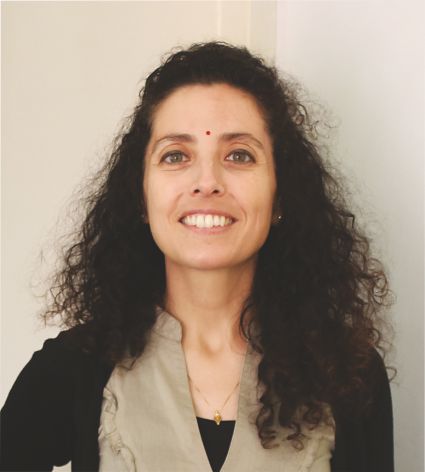
Targeting the foreign market with a goal which ultimately leads to becoming the world’s largest eco-friendly tableware supplier, CHUK has focused on various international territories. Ms. Priscilla Spiga, Head of International Sales, CHUK, tell us about the difference in the Indian and foreign markets. She says, “Abroad, it is a little different. The market is a little bit more mature. When they spend their money, they may pay more if there is an assurance that they are using right, harmless products.”
Talking about the competition abroad, Ms. Spiga says, “There is stiff competition because of good level of awareness among people and the presence of companies catering quality products. However, we also believe in our own product quality and are determined to face that stiff competition by venturing into markets such as Singapore, France, and USA.”
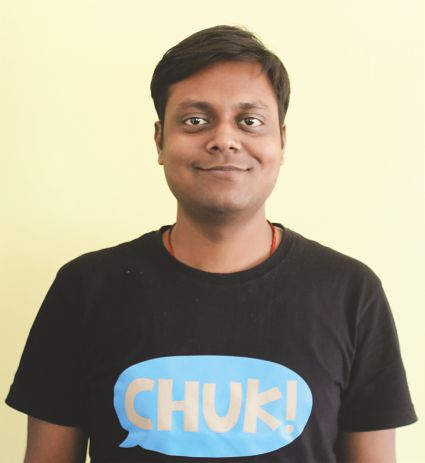
As far as challenges are concerned, pricing is a big issue for a bagasse product; reason being the high cost of production involved. Local logistics is another big issue as the entire food segment in bigger cities lacks space and CHUK products are voluminous. Therefore, the supply chain is done on daily basis in such cases. It becomes a challenge at the dealer’s end; he needs to supply on a daily basis. “We would have to become very efficient by becoming absolutely service-oriented in our profession and ensure how to do timely deliveries because delivery is something due to which industry will count upon us,” says Mr. Pai. .
Creating awareness is another challenge, which has to be resolved continuously with the growing market. “Everything is a challenge but challenge is what makes it interesting. A month ago, we have been here in a school and we made a presentation on CHUK. People were bewildered as they are unaware. They don’t want to know, which is fine of course, but our mission is to go and tell people what it is and then a little seed would be sown to yield results afterwards,” says Ms. Spiga. .
.
.



